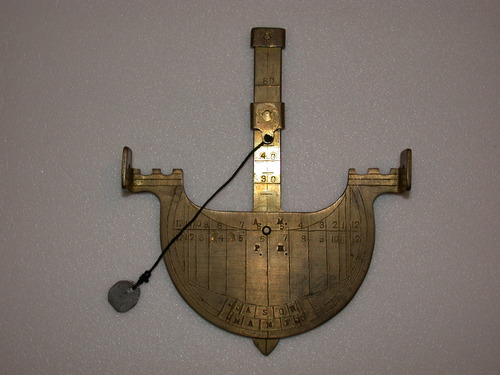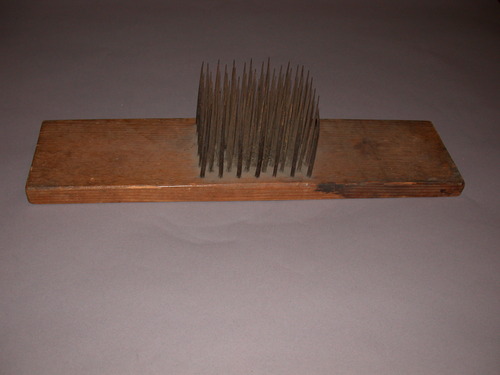Durability
Metal's durability and hardness makes it a suitable medium in which to create both tools and weapons. For measuring tools, such as the navicula pictured at left, the ability of metal to hold its shape over time is essential.
This navicula, reproduced by F.R. Bolster in the 1940's from a 15th century original, is an example of a sundial which utilizes a reading of the sun’s altitude in the sky to determine the time of day. Held vertically, the sun’s light is focused through two sight holes which cast a shadow on the face of the piece indicating the time based on where the plumb string’s bead falls. The mast portion is adjustable to compensate for changes of latitude and date. The navicula, also referred to as ‘little ship of Venice,' was a very useful tool for sailors trying to tell time at sea. Examples of such technology have been estimated as early as the 13th Century.
(Curated by Patrick Sullivan)
Known as a hetchel, hackle, or comb, this gruesome looking object was a critical tool used by early Americans in making linen cloth from flax plants. Each of the spikes, called "pins" were handmade specifically for this type of tool. This example is over two hundred years old, a testament to the durability of metal tools stored in the proper conditions.
(Curated by Erik Bushey)

